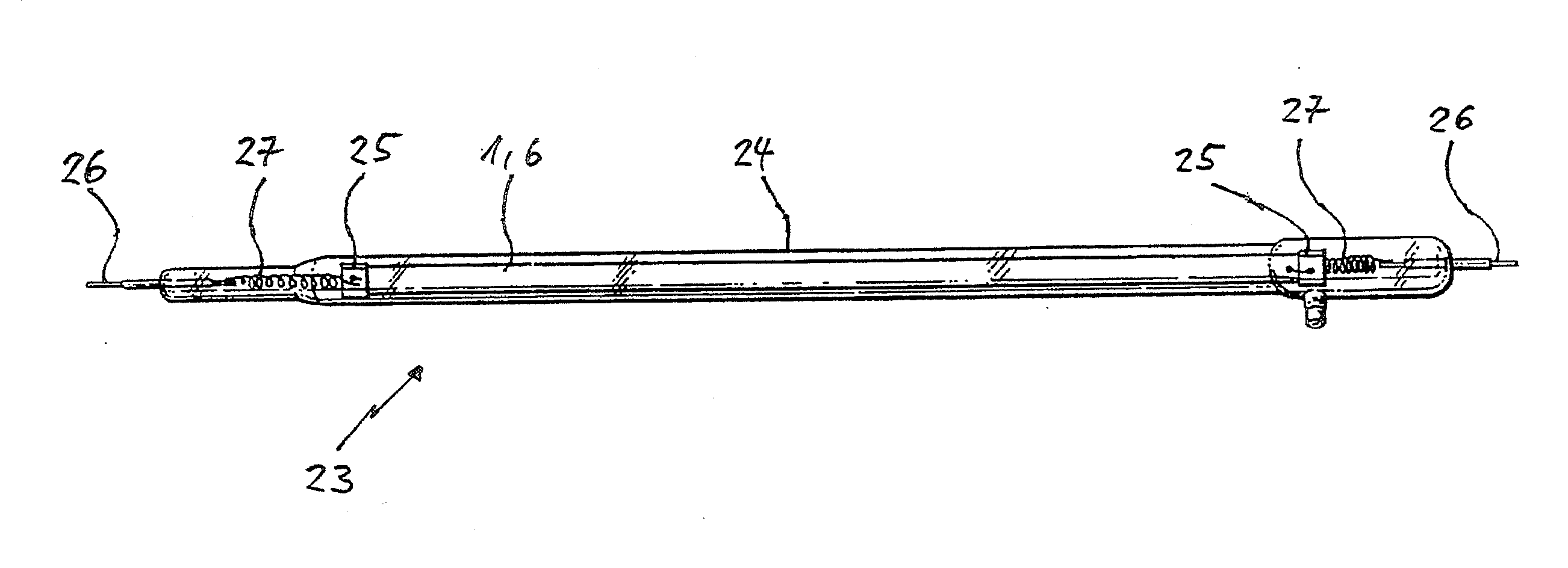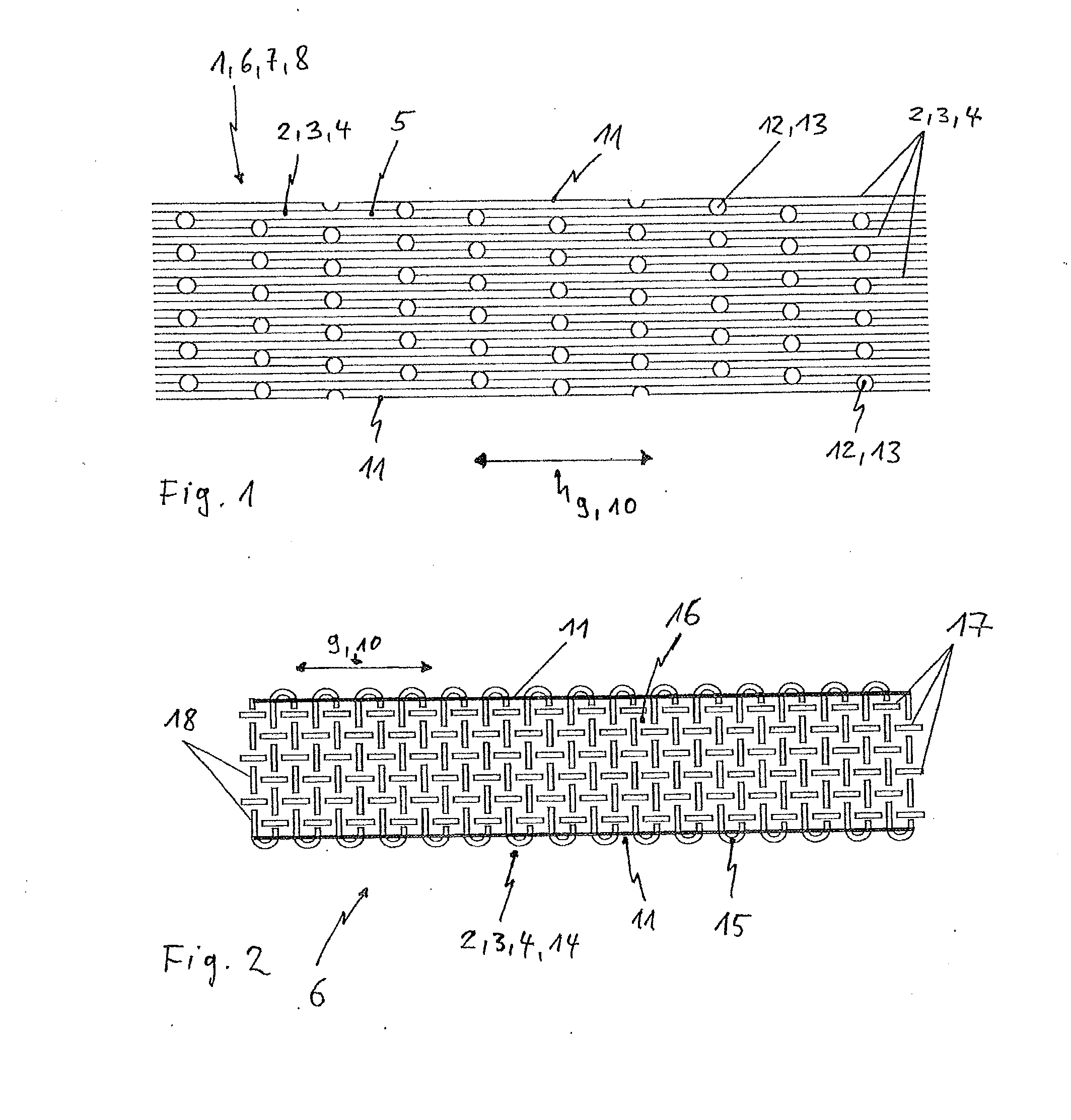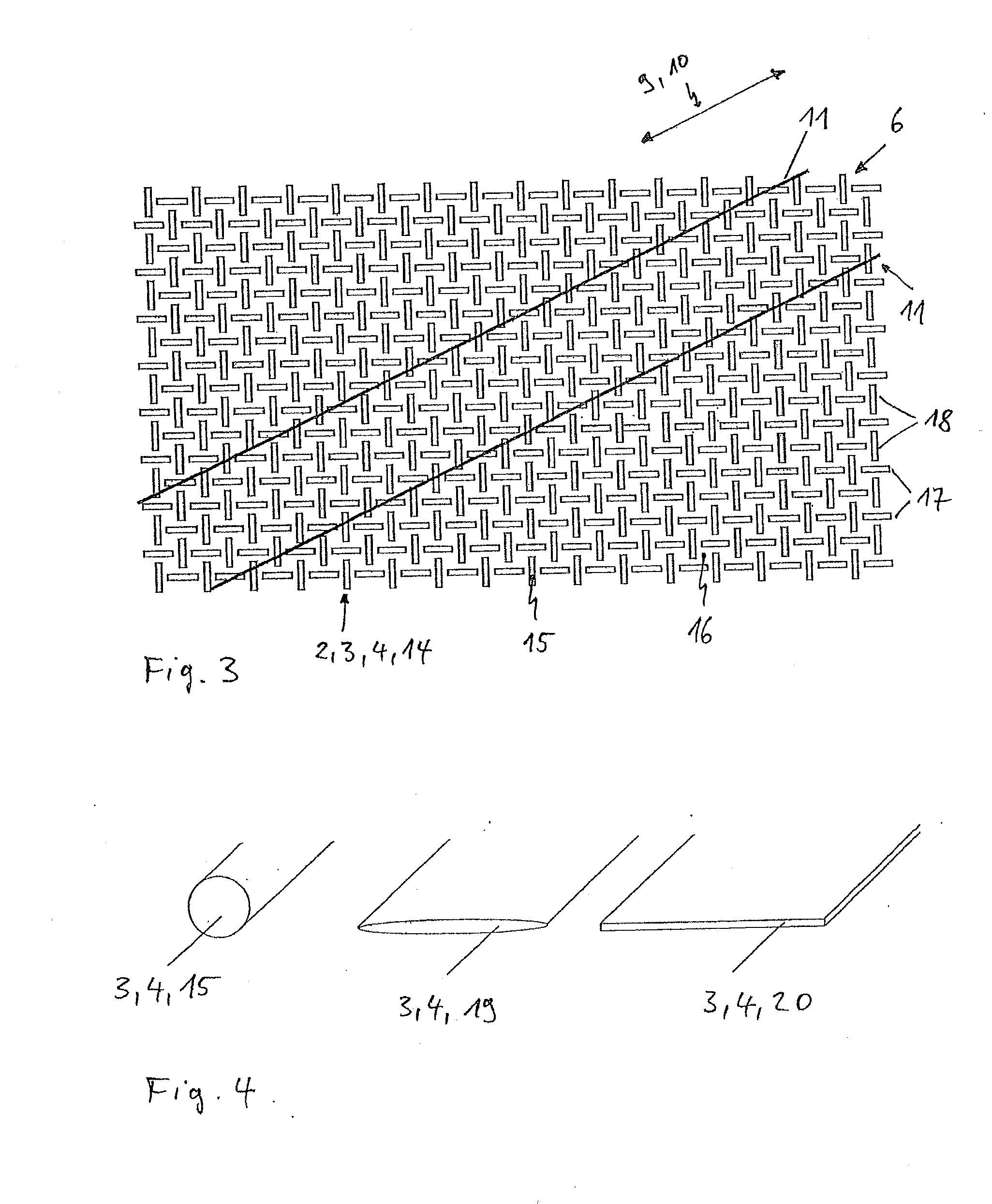Electrically conductive material, emitter containing electrically conductive material, and method for its manufacture
a technology of electrically conductive materials and emitters, which is applied in the direction of conductors, electrical apparatus casings/cabinets/drawers, and connection devices, etc., can solve the problems of insufficient electrical resistance of the filaments proposed therein, insufficient electrical resistance for the operation of very long emitters at common electrical voltage in industrial applications, and insufficient length of filaments and/or heating rods. , to achieve the effect of reducing the thickness of the fiber bundl
- Summary
- Abstract
- Description
- Claims
- Application Information
AI Technical Summary
Benefits of technology
Problems solved by technology
Method used
Image
Examples
exemplary embodiment 1
[0123]Exemplary embodiment 1 relates to the manufacture of a filament according to FIG. 1. Unidirectional thermoplastic carbon fiber tape 8 is used for this purpose, from which the tape-shaped filaments 6 are cut to the needed dimensions (length and width), wherein the length of the filament 6 exceeds its width by far. In this context, the carbon fibers 4 extend in the direction of longitudinal extension 10 of the filament 6, parallel to the cutting edge 11. Subsequently, electrical contacts (not shown) are attached to the filaments 6, the filaments 6 are carbonized, and then graphitized according to need.
[0124]The filaments 6 are then provided with bore holes 13 of a diameter of 0.1 mm to 1.5 mm introduced into the material by a laser. The bore holes 13 are arranged appropriately in this context, such that each individual carbon fiber 4 is severed at least once between the two electrical contacts (not shown here). This ensures that the current cannot directly follow along the indiv...
exemplary embodiment 2
[0127]This exemplary embodiment relates in more detail to FIG. 2 and FIG. 3.
[0128]For manufacturing the filament 6, a woven material 14 as starting material is used as structure 2 to be coated with a thermoplastic material as an enveloping material 16 and subsequent consolidation. The tape-shaped filaments 6 are then cut to the requisite dimensions from the composite.
[0129]The woven material 14 consists of carbon fibers 4, which, as fiber bundles 15 and / or rovings (these terms are used synonymously herein), consist of as few fibers 3 as possible. Particularly well-suited are rovings 15 and / or bundles of 25 tex to 100 tex (1 tex is defined as 1 g per 1,000 meters of fiber length) both as warp thread 17 and as weft 18. Rovings 15 made of carbon fibers 4 of 0.5 k, 1 k or 3 k can be used, wherein 0.5 k and 1 k are to be preferred.
[0130]The woven material 14 is produced in plain weave, twill weave or any other type of weave and attains a weight per unit area of 30 g / m2 up to maximally 50...
exemplary embodiment 3
[0137]In a refinement of exemplary embodiment 2, another procedural step precedes the process of coating and consolidation of the woven material 14 with the enveloping material. The fiber bundles 15 used for producing the woven material 14 are initially reworked in terms of their shape from a largely round bundle cross-section to a fiber bundle having an elliptical cross-section 19 and / or a fiber bundle having a rectangular cross-section 20, as is illustrated in FIG. 4.
[0138]Preferably, this is achieved by the woven material 14 according to FIG. 3 running loosely over a blower or the woven material being guided through rollers. In the process, the fibers 3 are distributed homogeneously over the given surface. The voids that are initially present in the woven material 14 close virtually completely and the woven material 14 gets flatter.
PUM
| Property | Measurement | Unit |
|---|---|---|
| Temperature | aaaaa | aaaaa |
| Temperature | aaaaa | aaaaa |
| Length | aaaaa | aaaaa |
Abstract
Description
Claims
Application Information
 Login to View More
Login to View More - R&D
- Intellectual Property
- Life Sciences
- Materials
- Tech Scout
- Unparalleled Data Quality
- Higher Quality Content
- 60% Fewer Hallucinations
Browse by: Latest US Patents, China's latest patents, Technical Efficacy Thesaurus, Application Domain, Technology Topic, Popular Technical Reports.
© 2025 PatSnap. All rights reserved.Legal|Privacy policy|Modern Slavery Act Transparency Statement|Sitemap|About US| Contact US: help@patsnap.com



